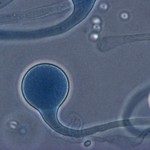About
Why is it important to study the phylogeny of pathogenic fungi. Identification of fungi relied for many years on macroscopic and microscopic morphology on different culture media, it is now almost completely based on sequence homology with the caveat that not all the experts agree on the percentage of difference that separate one species from another. The multiplication of the names (teleomorphes, anamorphes, synonyms …) and the continuous changes have been very confusing especially for the clinicians who are very reluctant to accept changes of names without a demonstration that it relies not only on a few morphological or even nucleotide differences but differences that can impact the management of the patients. Experts in taxonomy have often limited access to clinical and epidemiological data. In that regard, the collection of fungi we built for the past 15 years at the National Reference Center for Invasive Mycoses and Antifungals is very unique in that it contains more than than 5000 isolates of yeasts corresponding to 27 genera and 81 species, and more than 1500 isolates of filamentous fungi corresponding to 77 genera and 257 species, all associated with metadata.
We are focusing on specific groups of fungi (Mucorales, Fusarium, Scedosporium, phaeohyphomycetes) . The objective of the studies is to analyze the diversity of the species causing invasive infections diagnosed in France, but also analyze whether specific species or genotypes are associated with specific presentation and/or outcome.
External Collaborations: Jose Cano (Universitat Rovira i Virgili, Reus, Spain), Sybren de Hoog (CBS Fungal Biodiversity Center, Utrecht, The Netherlands), Lizel Mostert (Stellenbosch University, Matieland, South Africa), Wieland Meyer (Westmead Millennium Institute for Medical Research, Westmead, Australia), Vincent Robert BioAware, Hannut, Belgium).




